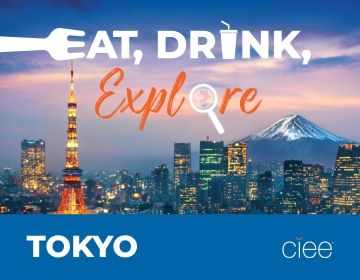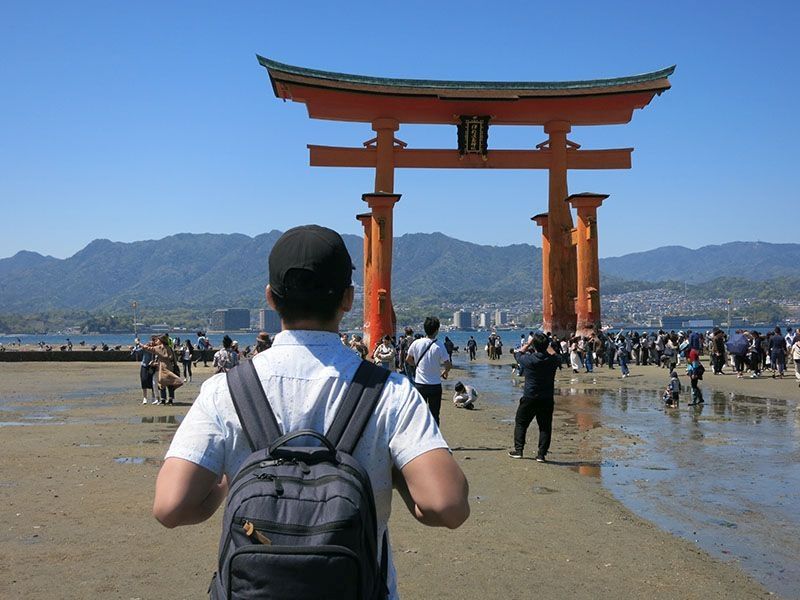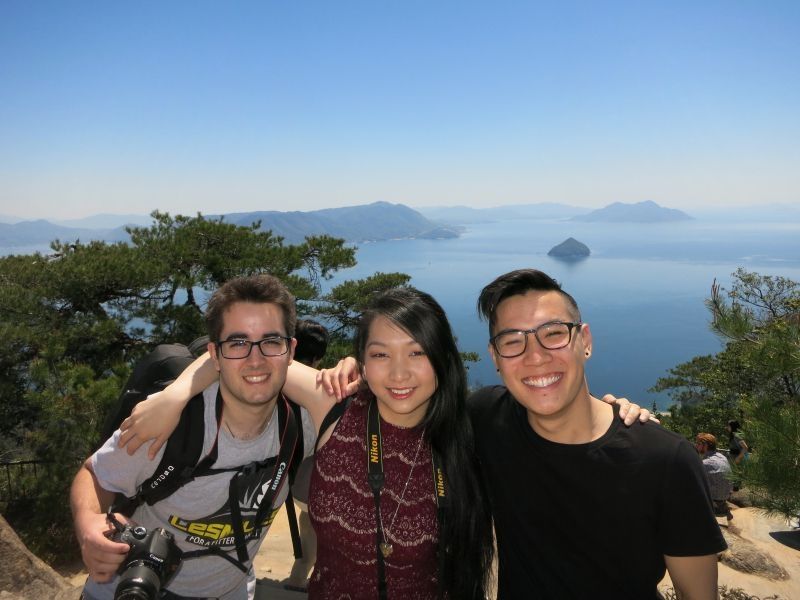A day in Hiroshima
April 21, Friday 4:50 pm I hopped on a train with my fellow program mates to Hiroshima, Japan. I didn't really know what to expect on this trip besides learning about the Nuclear bomb and the aftermath of the bomb. Heading from Yotsuya station to Tokyo station we had sometime to roam around.No experience is complete on a Shinkansen without a bento box. I ordered a hamburger steak bento which to my surprise wasn't half bad. Maybe it was largely due to the artistic colors and organization of the items put into the box. The 4 hour train ride passed by quickly when the views through suburb Japan is breath taking. Mountains along mountains and rice fields across rice fields, the views never felt repetitive.
We arrived in Hiroshima around 9pm and went to the hotel. I went out with some friends to an Izakaiya (Japanese bar) and had some sashimi and chat about our experienced so far with some friends. One thing that we didn't realize during orientation was how separate our daily lives were once school started. It was nice to catch up and finally see the people we came here with. We called it a night early because the next morning we were going to the Hiroshima Peace Memorial Museum.
The peace Memorial Museum, was one of the most humbling and enriching experience I had while abroad. Knowing a bit about the bombing that took place over 70 years ago, I soon learned other point of views of the bombing. The museum focuses heavily on the aftermath of the bomb, something that my education never really taught me. We saw pictures of the mushroom cloud, the empty flat terrains after the bomb but never, of the ground level. It was shocking to learn that many of the people who died were kids. They were younger than me and were deployed early in the morning to work. The work, to tear down buildings in case of air raids. Seeing the uniforms of the kids and knowing they were normal kids like me touched me. Along the museum we continued to see daily life artifacts and how the intense heat and radiation caused it to deform.
One specific exhibit hit home for me, Sadako and the thousand paper cranes. I remember reading her story as a child and folding paper cranes just like her and making a wish. Sadako’s story begins well after the bomb. As a child she survived the bomb along with her family. She lived a healthy life for 12 years, being a fantastic runner. However, as a teen, she developed leukemia as an effect of the exposure of radiation from the bomb. She died 8 months after being diagnosed. I never really thought much about the story as a kid, whether it was real, or fictional, to me it was to teach me the lessons of tragedy in war. I had no emotional connection to Sadako. But walking in the museum I didn’t realize how real she actually was. Her daily items, her post cards, her shoes were all in display. The most amazing part though, was the actual paper cranes she folded. In all she made over 1300 paper cranes. Each with the wish to live.
Afterwards, I had the opportunity to hear the story and life of the survivor of the bomb. Hearing her story and how traumatic it was to see the lifeless bodies as a kid, was terrifying. However, I find it important to hear these stories because as years pass we won't be able to hear them and continue their legacy. The rest of the day was a walking tour around Hiroshima. Its impressive how lively the city is and how quickly it recovered from the bomb. Hiroshima and it's citizen are strong advocates for world peace and the demolition of nuclear power. During the walking tour we got to see the only surviving building from the bomb. It was the epicenter of the bomb but because of the dome shaped bronze coated ceiling, the building managed to survive. It is now a UNESCO heritage site.
The last day in Hiroshima we visited the neighboring island of Miyajima. Miyajima is well known for its Tori gate on the water. Arriving on the island we were greeted by many wild deers as well as our tour guide. We got to walk along the shrine built on the water as well as go on a cable car ride up mount Misen. We ended the day taking the Shikansen back to Tokyo.
My experience in Hiroshima, although short was an cultural and historical enriching one. This trip allowed me to reflect on what's currently happening around the world and the crises many innocent people are facing because of pointless violence. It reminded me that history repeats itself therefore it's important to hear history and those who lived through it to help us make informed and humane decisions.
Related Posts

EAT, DRINK, EXPLORE: TOKYO
BEST FOOD TO EAT IN TOKYO Since the 17th century, soba (buckwheat) noodles have been a staple in the Japanese diet. These tasty noodles are as thick as spaghetti and... keep reading

Top 10 Japanese Slang Words & Phrases You Must Know
Textbook Japanese is great and all, but if you really want to impress the locals, you need to know Japanese slang terms. These aren’t the phrases you’ll learn in class... keep reading

The 13 Best Gifts for a Study Abroad Student in 2024
Are you looking for the best gifts to give someone traveling abroad? Perhaps you need to find some study abroad gifts for a student planning to study overseas. You've come... keep reading

